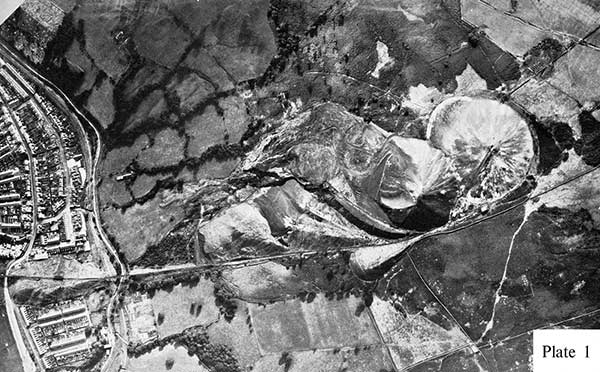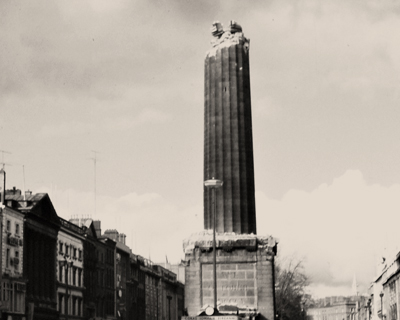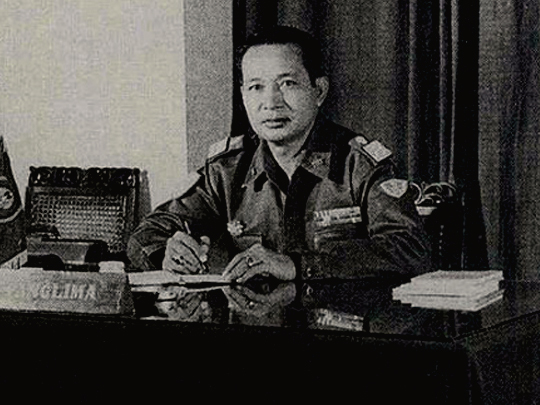Presidential Library / Wikimedia Commons / CC-BY-SA-3.0 / GFDL
1 – Military Coup Led by Indonesian General Suharto Breaks Out
Before dawn on 1 October 1965, six army generals were kidnapped and executed in Jakarta by soldiers from the Presidential Guard & other Divisions, with soldiers occupying Merdeka Square.
It was announced on the radio that the “30 September Movement” had forestalled a coup attempt on Sukarno by “CIA-backed power-mad generals”, adding it was “an internal army affair”.
The army in alliance with religious civilian groups led a campaign to purge Indonesian society, government, and armed forces of the communist party and leftist organizations.
The purge spread from Jakarta to much of the rest of the country. The most widely accepted estimates are that at least half a million were killed, with as many as 1.5 million imprisoned at one stage or another.
As a result of the purge, one of Sukarno’s three pillars of support, the Indonesian Communist Party, was effectively eliminated by the other two, the military and political Islam.
By January 1967, Suharto felt confident that he had removed all significant support for Sukarno within the armed forces, and the MPRS decided to hold another session to impeach Sukarno.
On 22 February 1967, Sukarno announced he would resign from the presidency, and on 12 March, the MPRS session stripped him of his remaining power and named Suharto acting president.
Sukarno was placed under house arrest in Bogor Palace. There was little more heard from him, until his death in June 1970. On 27 March 1968, the MPRS appointed Suharto for the first of his five-year terms as President.
2 – The Aberfan Disaster

The Aberfan disaster was the catastrophic collapse of a colliery spoil tip on the morning of 21 October 1966.
The tip was located on a mountain slope above the Welsh village of Aberfan, but in contravention of the National Coal Board’s procedures, it partly overlay a natural water spring.
A period of heavy rain led to a build-up of water within the tip which caused it to suddenly slide downhill as a slurry, killing 116 children and 28 adults.
The main building hit was Pantglas Junior School, where lessons had just begun, resulting in 5 teachers and 109 children being killed.
The tip was one of seven spoil tips on the slopes above Aberfan. It had begun in 1958 and was 111 feet high at the time of the disaster.
It was the responsibility of the National Coal Board, with the subsequent inquiry placing the blame on the organization. However, neither the NCB nor any of its employees were prosecuted or fined.
The Aberfan Disaster Memorial Fund was set up on the day of the disaster, receiving contributions totaling £1.75 million.
The remaining tips were removed only after a lengthy fight by Aberfan residents, against resistance from the NCB and the government.
Clearing of the spill was paid for by a government grant and a forced contribution of £150,000 from the memorial fund. The British government paid the money back to the fund in 1997.
Many of the village’s residents have since suffered medical problems, and most of the survivors have experienced post-traumatic stress disorder since the disaster.
3 – First Jewish Child Born in Spain Since 1492 Expulsion
Spanish Jews once constituted one of the largest and most prosperous Jewish communities in the world.
This period ended definitively with the anti-Jewish riots of 1392 and the Alhambra decree of 1492.
As a result, the majority of Jews in Spain (200,000 to 250,000) converted to Catholicism and the remaining 40,000 to 100,000 were forced into exile.
On January 2, 1966, the first Jewish child was born in Spain since their 1492 expulsion.
The Alhambra Decree that had expelled the Jews was formally rescinded on December 16, 1968.
4 – An IRA Bomb Destroyed Nelson’s Column in Dublin

Nelson’s column was a large granite column capped by a statue of Horatio Nelson, built in the center of what was then Sackville Street (later renamed O’Connell Street) in Dublin, Ireland.
It was completed in 1809 when Ireland was part of the United Kingdom.
The column survived until March 1966, when it was severely damaged by explosives planted by Irish republicans.
There were no casualties and damage to property was relatively light given the strength of the blast.
All that was left of the Pillar was a jagged stump, about 70 feet high. The remnants were later destroyed by the Irish Army.
5 – Topeka, Kansas is Devastated by a Tornado

The June 1966 tornado outbreak sequence was a series of tornado outbreaks that occurred between June 2 and June 12.
The most destructive tornado of this event occurred on the early evening of June 8, 1966, when Topeka, Kansas was struck by an F5 rated tornado.
It started on the southwest side of town, moving northeast, passing through several subdivisions and over a local landmark named Burnett’s Mound.
57 tornadoes were confirmed during the 11-day span, which left 18 people dead and 543 injured.
